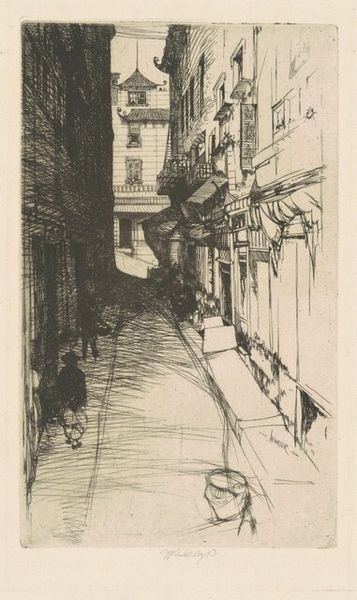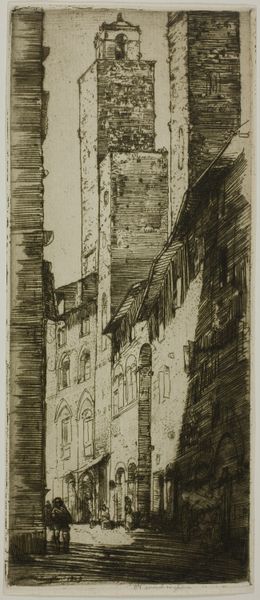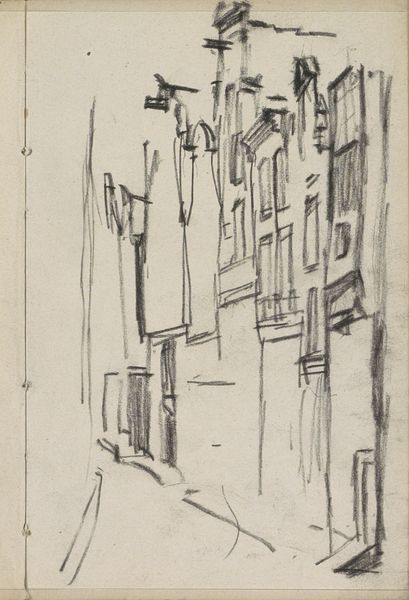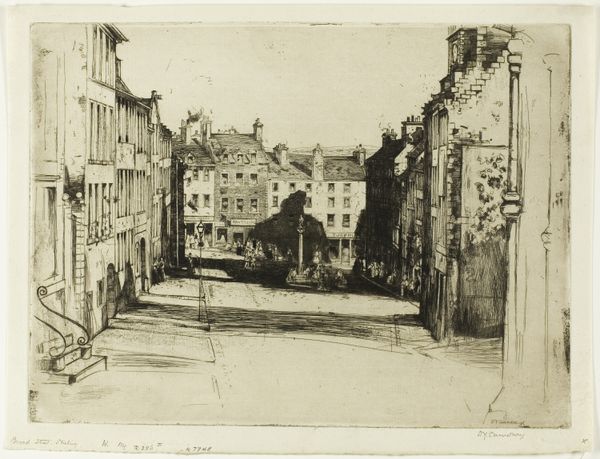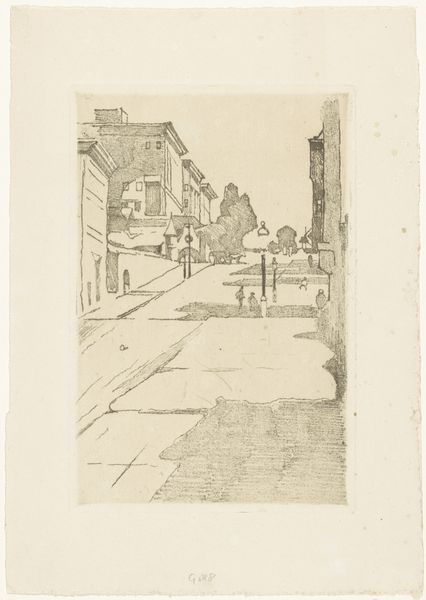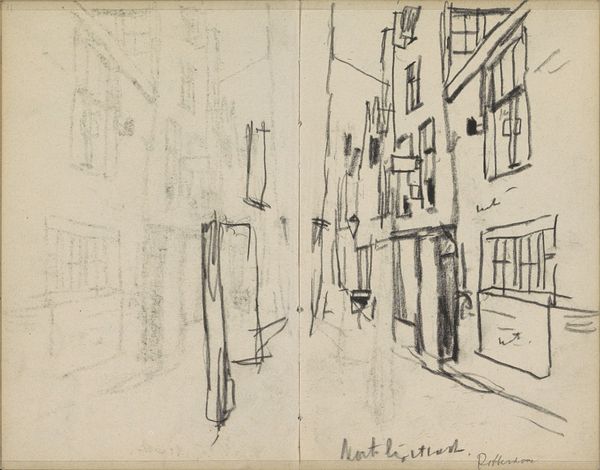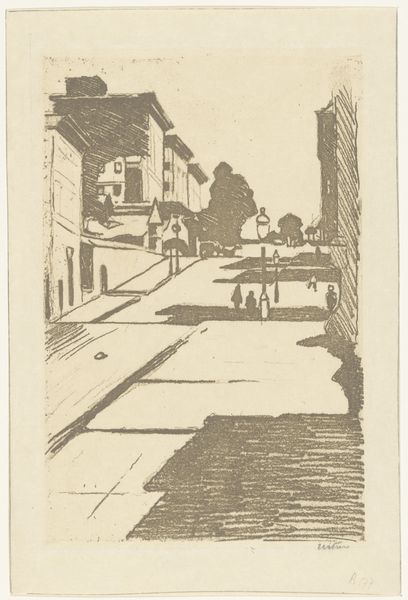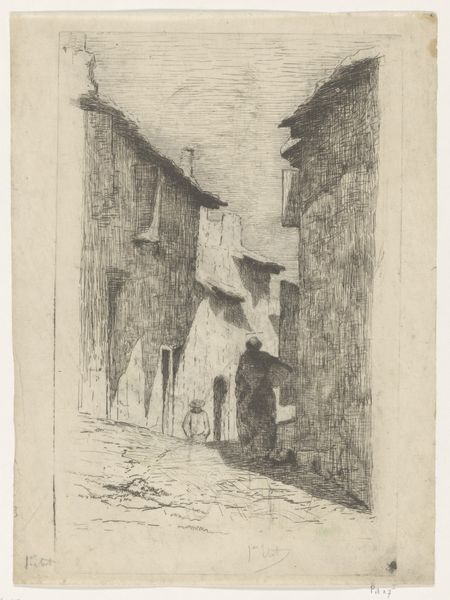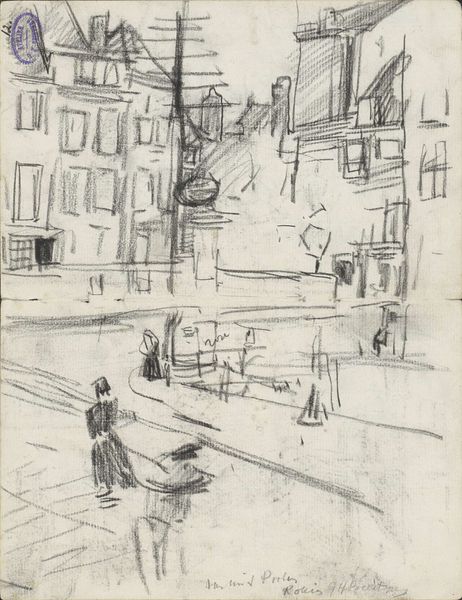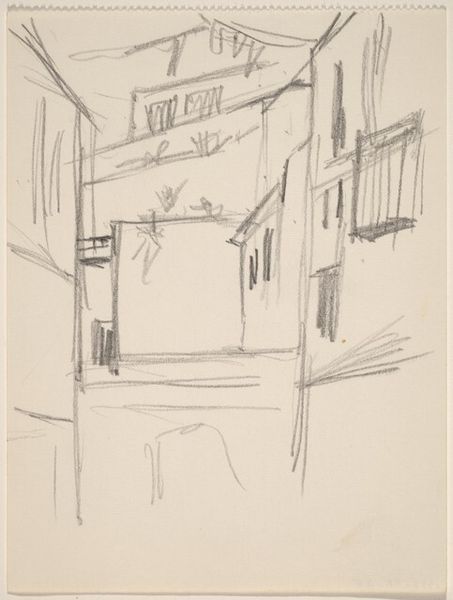
drawing, print, etching, pencil
#
drawing
# print
#
etching
#
pencil sketch
#
etching
#
pencil
#
cityscape
#
realism
Dimensions: 130 mm (height) x 115 mm (width) (plademaal)
Curator: We’re looking at “Stræde i Allinge,” or “Street in Allinge,” an etching by Henry Nielsen, created in 1934. It’s currently held here at the SMK, the National Gallery of Denmark. Editor: My first impression is of a quiet, almost ghost-like street. The sketch-like quality makes it feel transient, as if this scene is just barely there. There is little detail to it, creating soft outlines in tones of white and black, but no greys. The building looms over people on the street, in an overwhelming and looming fashion. Curator: I agree; Nielsen captures a unique quality through this chosen medium. The scene depicts a street in Allinge, a town on the island of Bornholm. Examining the composition, it is difficult to discern specifics about the street life. Nielsen was interested in depicting everyday life, though he has obscured a great deal with his hasty mark making, giving more room to interpretation and perception. Editor: How do you think the socio-political climate of the 1930s Denmark, on the precipice of global war, might have affected this work? Does this perspective have the same outlook as artists capturing similar urban scenes in rapidly industrializing European cities at the beginning of the 20th century? I see it as almost anti-establishment given that Bornholm was occupied by German forces throughout the war and into 1946. Curator: That's a perceptive point. During the interwar period, Danish art often wrestled with questions of national identity and social change. Nielsen's decision to focus on a common street in a provincial town could reflect a desire to highlight the beauty and dignity of ordinary Danish life during that time. The way you are viewing the occupation through this image resonates today just as much. Editor: Exactly, the stark black and white and somewhat uneasy perspective highlights a community teetering, overwhelmed by these external forces. Curator: It really emphasizes how art reflects not just what is seen, but how it's felt, at a specific time in history. Editor: Yes. Ultimately, these quiet streets become battlegrounds of collective memory and resistance through this art. The act of drawing then becomes an act of preserving cultural identity through the darkest of times.
Comments
No comments
Be the first to comment and join the conversation on the ultimate creative platform.
